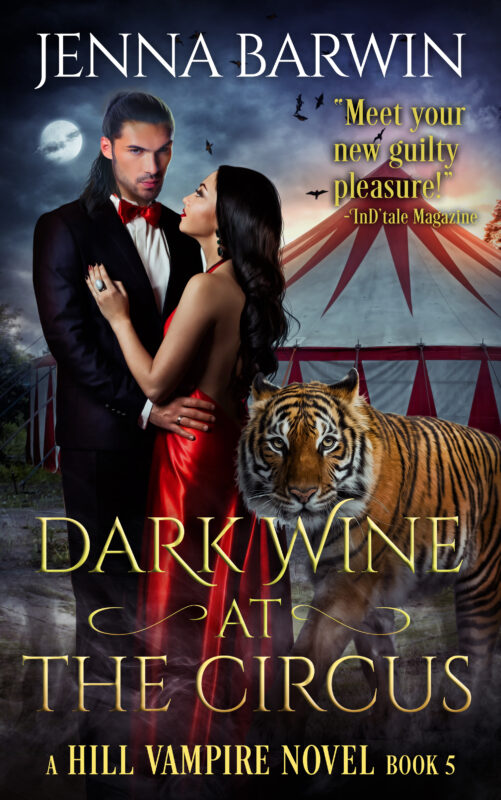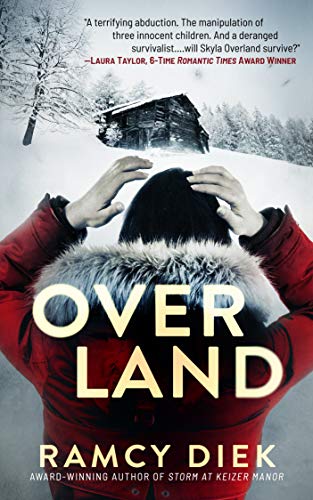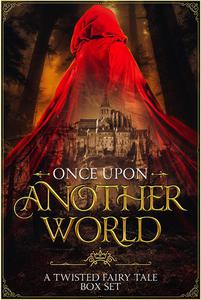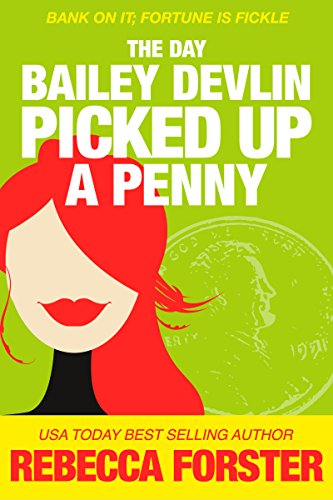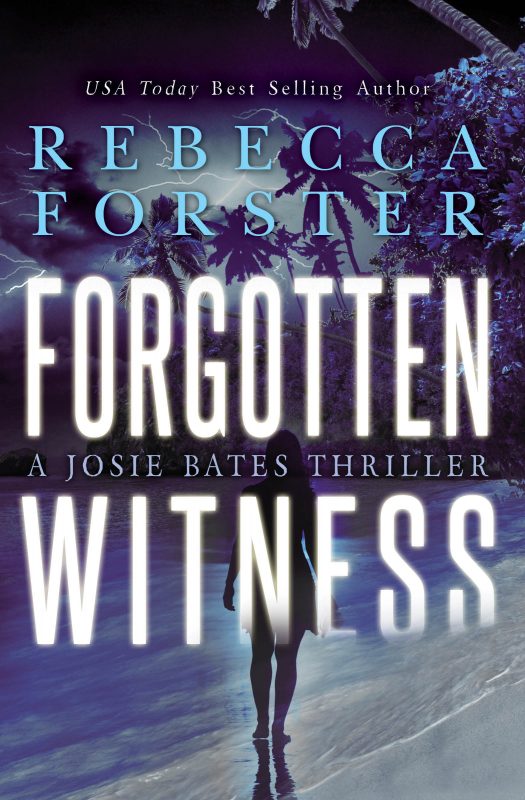Pick Six Author Interview with Celeste Barclay
June 16, 2019 by A Slice of Orange in category Pick Six Author Interviews tagged as Celeste Barclay, historical romance, viking romance
Pick Six Author Interviews are occasional features on A Slice of Orange. We send a bunch of questions to the author who then picks just six of the questions to answer. This month we are featuring a Pick Six Author Interview with Celeste Barclay.
1. How did it feel when your first book got published?
It was utterly surreal. I remember uploading it onto KDP and thinking, “okay, now I need to figure out what I’m doing.” I had a story to tell, and I did. It wasn’t until after I wrote and published it that I realized I needed to figure out how to market it and all that goes with it.
2. Did you celebrate your first book? If so how?
I celebrated by staring at my screen for a good long while in disbelief that it was done and really for sale! I hadn’t told a soul what I was doing (fear of failure and rejection is mighty powerful), so I celebrated when my author proof arrived. I took a pic and sent it to my best friend captioned, “So I did a thing.” I believe at least one glass of wine was involved too.
3. Do you start with a plot idea, a character or a theme?
All of the above. For years, stories have pranced, or is it scampered, through my mind as I’m trying to fall asleep. Usually, it’s a scene somewhere in the story, not always the beginning, and that begins to give me an idea for characters and plot. From there theme and trope materialize. If my mind comes back to it for more than one night, I know I have a story to tell.
4. What kind of writer are you? A page a day or a burst writer?
I would like to be a daily writer, but I’m not writing full time (yet), so it’s usually weekend warrior bursts or nighttime writing. I’ve churned out as much as 20,000 words in one day, but average between 5,000 and 10,000 on a good weekend day.
5. What does a perfect vacation look like?
One where no one is asking anything of me! I prefer the beach even though I live near one. The Caribbean and Mediterranean are my favorites, but I wouldn’t turn my nose up at Bali or Tahiti. I admit I’m still a sun worshiper, so time spent in the water is what I look forward to, or time in a lounge chair reading.
6. Do you keep a diary?
This one makes me laugh. Why would I keep a diary? All my innermost thoughts are shared with my readers through my stories! I write to escape reality as much as I write to offer others an escape, so stories have flashes of my fantasies or memories which are things many people fill their diaries with. Mine just happen to get published for the masses.
We hope you enjoyed this Pick Six Author Interview with Celeste Barclay.
Books by Celeste Barclay
The Book Jacket
June 15, 2019 by Rebecca Forster in category The Write Life by Rebecca Forster tagged as inspiration, Rebecca Forster, thrillers, writing
 This morning I read an article entitled Mister Waters’s Cardigan. It seems that Mr. John Waters, the campy, iconic American film director, screenwriter, author, actor, stand up comedian and all-around-impressive guy wears a ‘writing’ cardigan with mother-of-pearl buttons to spark his imagination. It is an Our Legacy cardigan. Our Legacy is a line of clothing designed for “down-to-earth, embarrassed-to-be-affluent fashionistas who never want to look silly” (this according to Mr. Waters). I looked up Our Legacy. The man’s cardigan I saw would set you back $458. It was very nice and very understated. Indeed, this cardigan would fool anyone into thinking the darn thing was made for a regular Joe.
This morning I read an article entitled Mister Waters’s Cardigan. It seems that Mr. John Waters, the campy, iconic American film director, screenwriter, author, actor, stand up comedian and all-around-impressive guy wears a ‘writing’ cardigan with mother-of-pearl buttons to spark his imagination. It is an Our Legacy cardigan. Our Legacy is a line of clothing designed for “down-to-earth, embarrassed-to-be-affluent fashionistas who never want to look silly” (this according to Mr. Waters). I looked up Our Legacy. The man’s cardigan I saw would set you back $458. It was very nice and very understated. Indeed, this cardigan would fool anyone into thinking the darn thing was made for a regular Joe.
I read the half-page article about Mr. Waters’s cardigan and lusted over the column inches dedicated to his sweater and his work. But the sweater? I’ll pass. You see, I have writing wear too and I think mine beats his hands down. Instead of a sweater, I wear a fleece jacket. It is made of recycled tires. My husband keeps trying to wash the darn thing because the cuffs are turning black and he thinks it’s dirty. I explain this is just the fleece wearing out and the black rubber of the recycled tires peeking through, but he will have none of it. I am constantly rescuing my writing jacket from the laundry.
Instead of an understated heather grey, my jacket is screaming-mimi yellow. I make no excuses for this. I know I am not at my most attractive in this jacket. I actually look like a cross between Tweety Bird and an egg yolk. On a good day I can pass for Sponge Bob Squarepants.
My jacket has no fashionista sensibilities with its big collar, giant cuffs and boxy cut. My jacket has three plastic buttons. My writing jacket set me back $10. Yes, that is ten buck-a-roos which is $448 less than Mr. Waters’s cardigan.
As different as Mr. Waters and I are – he writes camp, I write thrillers, he is affluent, I am what I am – we are the same in that we draw inspiration from something we don before we write. Our writing clothes keep us warm, help us think, signals to the world that we are working and are not to be disturbed. Our jacket/sweaters give us confidence and stick with us as we create worlds far away from the world we’re in. So the bottom line is this: find your writing sweater/jacket. No matter what it looks like, no matter how much you spend on it, if it’s the right one the benefits you will gain as an author are priceless.
June Featured Author: Denise M. Colby
June 14, 2019 by Denise M. Colby in category Apples & Oranges by Marianne H. Donley, Featured Author of the Month tagged as Christian Historical Fiction, Denise M Colby, Marketing, Social Media, writing

Denise M. Colby loves to write words that encourage, enrich, and engage whether it’s in her blog, social media, magazine articles, or devotions. With over 20+ years’ experience in marketing, she enjoys using her skills to help other authors. She treasures the written word and the messages that can be conveyed when certain words are strung together. An avid journal writer, she usually can be found with a pen and notepad whenever she’s reading God’s word. Denise is writing her first novel, a Christian Historical Romance and can be found at www.denisemcolby.com
She’s a member of RWA, OCC/RWA, Faith, Hope & Love Chapter of RWA, ACFW (where she is a semi-finalist in the Genesis contest Historical Romance Category), OC Chapter of ACFW, and SoCal Christian Writers’ Conference (where she will be teaching two workshops in June – Brand and SEO Marketing for Your Website).
In addition to Denise’s column The Writing Journey on A Slice of Orange, you can read some of her magazine article here.
Denise M. Colby’s Books
Creating a Setting for Your Cozy Mystery by Carol L. Wright
June 13, 2019 by Bethlehem Writers Group in category From a Cabin in the Woods by Members of Bethlehem Writers Group tagged as BWG, Carol L Wright, cosy mysteries, cozy mysteries, Setting, writing

This month on From A Cabin in the Woods, we are featuring editor and author, Carol L. Wright.
Carol L. Wright escaped a career in law and academia for one in writing. She loves writing her Gracie McIntyre cozy mysteries where, unlike in life, justice always prevails. The first in the series, DEATH IN GLENVILLE FALLS, was a finalist for both the 2018 Killer Nashville Silver Falchion Award and the 2018 Next Generation Indie Book Award. She also writes short stories in many genres that have been published in a variety of literary journals and award-winning anthologies. She is married to her college sweetheart, and they live in the Lehigh Valley of Pennsylvania with their rescue dog and clowder of cats. Find out more on her website, and on Facebook at Carol L. Wright, Author.
Creating a Setting for Your Cozy Mystery
Carol L. Wright
 When we think about the setting for a cozy mystery, Murder She Wrote’s Cabot Cove or Agatha Christie’s St. Mary’s Mead often come to mind. Indeed, the term “cosy,” as the Brits spell it, was coined to describe Dame Agatha’s mysteries. Following these examples, most cozy writers choose a closed community as the backdrop for their murder. But, there is much more to a memorable setting for a cozy than being located in a small town.
When we think about the setting for a cozy mystery, Murder She Wrote’s Cabot Cove or Agatha Christie’s St. Mary’s Mead often come to mind. Indeed, the term “cosy,” as the Brits spell it, was coined to describe Dame Agatha’s mysteries. Following these examples, most cozy writers choose a closed community as the backdrop for their murder. But, there is much more to a memorable setting for a cozy than being located in a small town.
Once, only British settings were deemed appropriate for cozies. As recently as twenty years ago, some said cozies had to be set in England or in New England. But Jessica Fletcher travelled widely, and even Christie set some of her mysteries on an isolated Indian island (And Then There Were None) or at an exotic hotel (A Caribbean Mystery). Many readers, in fact, love to learn about new places while trying to solve a mystery—so long as those places aren’t too off-putting. Harsh settings are usually reserved for harder-edged fiction.
 With the idyllic small-town disappearing in the modern world, it’s not necessary to recreate a Cabot Cove. Since part of a cozy setting is the feeling of comfort and normalcy, you can set your mystery any place you wish, so long as you give your readers a feeling of familiarity. Anything from an ancient castle to a city neighborhood, a ski lodge to a desert island, a vacation resort to an Amish community will work just as well. Almost any place will do where people are thrown together and know (or get to know) each other.
With the idyllic small-town disappearing in the modern world, it’s not necessary to recreate a Cabot Cove. Since part of a cozy setting is the feeling of comfort and normalcy, you can set your mystery any place you wish, so long as you give your readers a feeling of familiarity. Anything from an ancient castle to a city neighborhood, a ski lodge to a desert island, a vacation resort to an Amish community will work just as well. Almost any place will do where people are thrown together and know (or get to know) each other.
Real or Fictional
But, should your setting be real or fictional? Both have their challenges.
 If you use a real place, you need to be familiar enough with it to be sure you don’t get it wrong. Residents of that place must be able to imagine your story on the familiar streets of their home. You can’t place an event at the intersection of 15th Avenue and 26th Street in Manhattan, for instance, since anyone familiar with New York would know that would put you somewhere in the Hudson River. Such errors take readers out of the story and cause them to question the rest of your “facts.” It might even cause them to give up on your book altogether or leave (yikes!) a bad review.
If you use a real place, you need to be familiar enough with it to be sure you don’t get it wrong. Residents of that place must be able to imagine your story on the familiar streets of their home. You can’t place an event at the intersection of 15th Avenue and 26th Street in Manhattan, for instance, since anyone familiar with New York would know that would put you somewhere in the Hudson River. Such errors take readers out of the story and cause them to question the rest of your “facts.” It might even cause them to give up on your book altogether or leave (yikes!) a bad review.
Besides accuracy, when using a real setting you need to beware of potential libel if you use real businesses or real people’s names—or even substitute fictional names but do not sufficiently conceal the real entity upon which it is based. You might think that a business owner would love to have the free publicity of being in your novel, but not all would—especially if they’re to be associated with a murder. If they believe your novel casts them in a false light, they can sue. Even if you won a lawsuit, it would cost you so much to defend it that you would regret using real names/businesses. If you must use real people or businesses, get a written release from them. For more on this, see: How to Use Real People in Your Writing.
The Details
The other option, of course, is to use a completely fictional setting. If you do, you will need to provide all the details of the terrain, climate, and culture of the place to allow your readers to become immersed in your fictional universe. Think about Carolyn Hart’s Broward’s Rock Island, SC, or my own Glenville Falls—a college town nestled in Western Massachusetts. While each is within a known region, the towns, their businesses, modes of transportation, and traditions are creations of the authors.
Even fictional settings can reference real places in a general way. In my Gracie McIntyre mysteries, I mention UMass-Amherst, Springfield, and Boston, MA, but the action of the story occurs in my fictional town of Glenville Falls. In Sherry Harris’s Sarah Winston Garage Sale Mysteries, that happen to be set in the area where I grew up, her town and the name of the nearby Air Force Base are fictional, but she mentions surrounding towns, roads, and landmarks. Reading them gives me a feeling of being back home. Done well, incorporating real places can help sales to the area’s current and former residents—especially if you do book signings there.

Back Ground Characters
Another part of the setting is your background characters. These are definitely NOT the folks who will drive your plot, kill your victim, or solve the crime. They’re the person who takes orders in the coffee shop, the mail carrier who delivers the threatening letter, or the security guard who lets people into the gated community. If the location of your story were a room, these characters would be the furniture.
As with any room, you want your furniture to add color, interest, and comfort to the setting. One character might have a colorful accent (pillow?) or mode of speech. Another could give the sleuth a place to rest and think a bit. Another could shed some light on the story. While these characters might serve a small role in the plot, they then go on about their fictional lives, unconcerned with what is happening in the rest of the novel. Still, they leave behind their imprint on your readers’ sense of place.
Once you have your setting—both the room and the furniture—you have the cozy world in which to spin your tale or your series. And, if, like me, you’re a “pantser”—one who writes by the seat of your pants rather than plotting everything out in advance—you might well be surprised to find that some of the lovely setting you’ve created ends up changing your story in ways you never anticipated.
What do you look for in a cozy setting? What are some of your favorite cozy settings?
Books by Carol L. Wright
New Chapter By Denise M. Colby
June 12, 2019 by Denise M. Colby in category The Writing Journey by Denise Colby tagged as Family, Graduation, New Chapter, writing
Books are written with chapters. Some books organize thoughts and points by chapter. Others are just continuing the story either from a different POV or a new plot twist, which makes us want to continue reading, wondering what will happen next.
Our lives are a little like this as well.
Some can be really long chapters and some can be short. A lot depends on what we are doing in the middle of the chapter and our control over whether we are starting fresh or not. Sometimes a new school year can be a new chapter, sometimes a new semester, or sometimes it’s changing schools or graduating. All these stages in life can be a new chapter.
All three of my boys have new chapters this year – they are graduating something.
The oldest had his a few weeks ago from the Community College he has been attending. And today we celebrate the other two – my youngest graduates 8th grade, while my middle son graduates high school. Both on the same day. It’s been a bit nuts the past few weeks. Lots of lasts, lots of goodbyes, lots of getting things ready for the next year, whether it was math placement tests, or turning in paperwork for college. It has been so fun to be on this journey with them, but I’m also very excited to turn the page and see what happens next.
At my age it’s a lot easier to reflect back and know what an exciting time this is for all three of them. They can do anything they put their minds to. Many doors will open and some will close. It will be up to them to make it all happen. And it’s interesting to see how quickly something can change or an opportunity presents itself.
Kind of like our characters do in the books we write.
It makes me think about my writing and somehow trying to put that same expectancy on the page. So that when we read we can’t put a book down because we are excited for what’s around the corner and we don’t want to miss it.
I sort of forget how flexible we all were when we were younger. Not so set in routine and order. Maybe that’s something I should keep in mind when I’m working on my book.
Happy Graduation boys. Mom is super proud of you!
Affiliate Links
A Slice of Orange is an affiliate with some of the booksellers listed on this website, including Barnes & Nobel, Books A Million, iBooks, Kobo, and Smashwords. This means A Slice of Orange may earn a small advertising fee from sales made through the links used on this website. There are reminders of these affiliate links on the pages for individual books.
Search A Slice of Orange
Find a Column
Archives
Featured Books
DARK WINE AT THE CIRCUS
Everyone has a secret fantasy—even a rich and powerful vampire…
More info →ONCE UPON ANOTHER WORLD: A Twisted Fairy Tale Box Set
Not all fairy tales are as they appear.
More info →THE DAY BAILEY DEVLIN PICKED UP A PENNY
Oh, Boy! Oh, Bailey!
Find a penny, pick it up; just don't bank on Lady Luck.
FORGOTTEN WITNESS
A madman's ramblings, a government's secrets and a personal pain send Josie Bates into hell on earth.
More info →Newsletter
Contributing Authors
Search A Slice of Orange
Find a Column
Archives
Authors in the Bookstore
- A. E. Decker
- A. J. Scudiere
- A.J. Sidransky
- Abby Collette
- Alanna Lucus
- Albert Marrin
- Alice Duncan
- Alina K. Field
- Alison Green Myers
- Andi Lawrencovna
- Andrew C Raiford
- Angela Pryce
- Aviva Vaughn
- Barbara Ankrum
- Bethlehem Writers Group, LLC
- Carol L. Wright
- Celeste Barclay
- Christina Alexandra
- Christopher D. Ochs
- Claire Davon
- Claire Naden
- Courtnee Turner Hoyle
- Courtney Annicchiarico
- D. Lieber
- Daniel V. Meier Jr.
- Debra Dixon
- Debra H. Goldstein
- Debra Holland
- Dee Ann Palmer
- Denise M. Colby
- Diane Benefiel
- Diane Sismour
- Dianna Sinovic
- DT Krippene
- E.B. Dawson
- Emilie Dallaire
- Emily Brightwell
- Emily PW Murphy
- Fae Rowen
- Faith L. Justice
- Frances Amati
- Geralyn Corcillo
- Glynnis Campbell
- Greg Jolley
- H. O. Charles
- Jaclyn Roché
- Jacqueline Diamond
- Janet Lynn and Will Zeilinger
- Jeff Baird
- Jenna Barwin
- Jenne Kern
- Jennifer D. Bokal
- Jennifer Lyon
- Jerome W. McFadden
- Jill Piscitello
- Jina Bacarr
- Jo A. Hiestand
- Jodi Bogert
- Jolina Petersheim
- Jonathan Maberry
- Joy Allyson
- Judy Duarte
- Justin Murphy
- Justine Davis
- Kat Martin
- Kidd Wadsworth
- Kitty Bucholtz
- Kristy Tate
- Larry Deibert
- Larry Hamilton
- Laura Drake
- Laurie Stevens
- Leslie Knowles
- Li-Ying Lundquist
- Linda Carroll-Bradd
- Linda Lappin
- Linda McLaughlin
- Linda O. Johnston
- Lisa Preston
- Lolo Paige
- Loran Holt
- Lyssa Kay Adams
- Madeline Ash
- Margarita Engle
- Marguerite Quantaine
- Marianne H. Donley
- Mary Castillo
- Maureen Klovers
- Megan Haskell
- Melanie Waterbury
- Melisa Rivero
- Melissa Chambers
- Melodie Winawer
- Meriam Wilhelm
- Mikel J. Wilson
- Mindy Neff
- Monica McCabe
- Nancy Brashear
- Neetu Malik
- Nikki Prince
- Once Upon Anthologies
- Paula Gail Benson
- Penny Reid
- Peter Barbour
- Priscilla Oliveras
- R. H. Kohno
- Rachel Hailey
- Ralph Hieb
- Ramcy Diek
- Ransom Stephens
- Rebecca Forster
- Renae Wrich
- Roxy Matthews
- Ryder Hunte Clancy
- Sally Paradysz
- Sheila Colón-Bagley
- Simone de Muñoz
- Sophie Barnes
- Susan Squires
- T. D. Fox
- Tara C. Allred
- Tara Lain
- Tari Lynn Jewett
- Terri Osburn
- Tracy Reed
- Vera Jane Cook
- Vicki Crum
- Writing Something Romantic
Affiliate Links
A Slice of Orange is an affiliate with some of the booksellers listed on this website, including Barnes & Nobel, Books A Million, iBooks, Kobo, and Smashwords. This means A Slice of Orange may earn a small advertising fee from sales made through the links used on this website. There are reminders of these affiliate links on the pages for individual books.







































